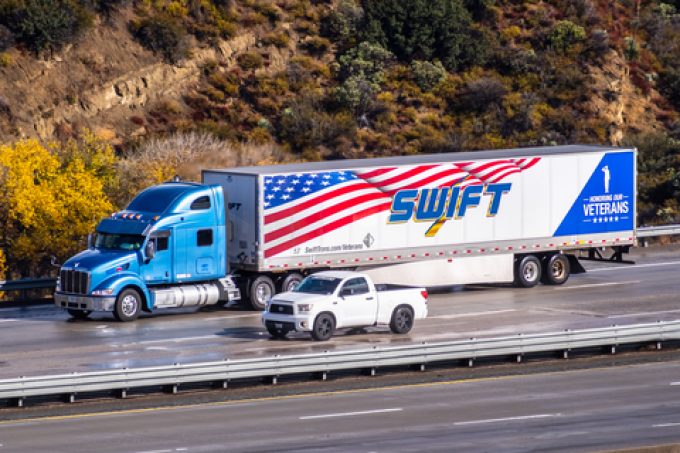Knight-Swift – any sign of the longed-for US freight inflection?
‘Kind of a grind or just a slow progression’

On the heels of a disappointing Q4 that pushed it behind earnings targets, Knight-Swift, the largest of the US truckload carriers, intends to expand through an acquisition in the LTL sector, while expecting a challenging first half for its core segment.
Shipments by truck in the fourth quarter suffered their largest drop since the height of the pandemic, according to the US Bank Freight Payment Index.
While Knight-Swift Transportation’s management had braced for a subdued spot market and infrequent project activity, general freight ...
Keep our news independent, by supporting The Loadstar
Volume surge and an early peak season? 'Don't celebrate too soon,' warning
Container spot rates diverge: to Europe still falling, but firmer to the US
Hapag-Lloyd won't take bookings if port congestion leaves cargo stranded
Ecommerce likely the front-runner in resurge of transpacific trade after deal
China-US trade tariff pause could drive a rebound for transpacific rates
Service chaos from trade ban with India a problem for Pakistan shippers
Airfreight rates ex-China 'loss-making', but hopes of a trade deal stay high
Shippers should check out the 'small print' in China-US tariff cuts
Carriers impose 'emergency operation' surcharges on Pakistan cargo
Serious threat to jobs in US logistics as tariffs cause economic 'stagflation'
15% rebate for box ships as Suez Canal Authority woos carriers
White House u-turns see freighters flying but keep logistics players on their toes
MSC in terminal switch as Nhava Sheva gets strong start to new fiscal year
Peak season or recession? Forwarders and shippers need to 'stay flexible'
Volga-Dnepr claims 'pirate' Canada has 'hijacked' its stranded aircraft


Comment on this article